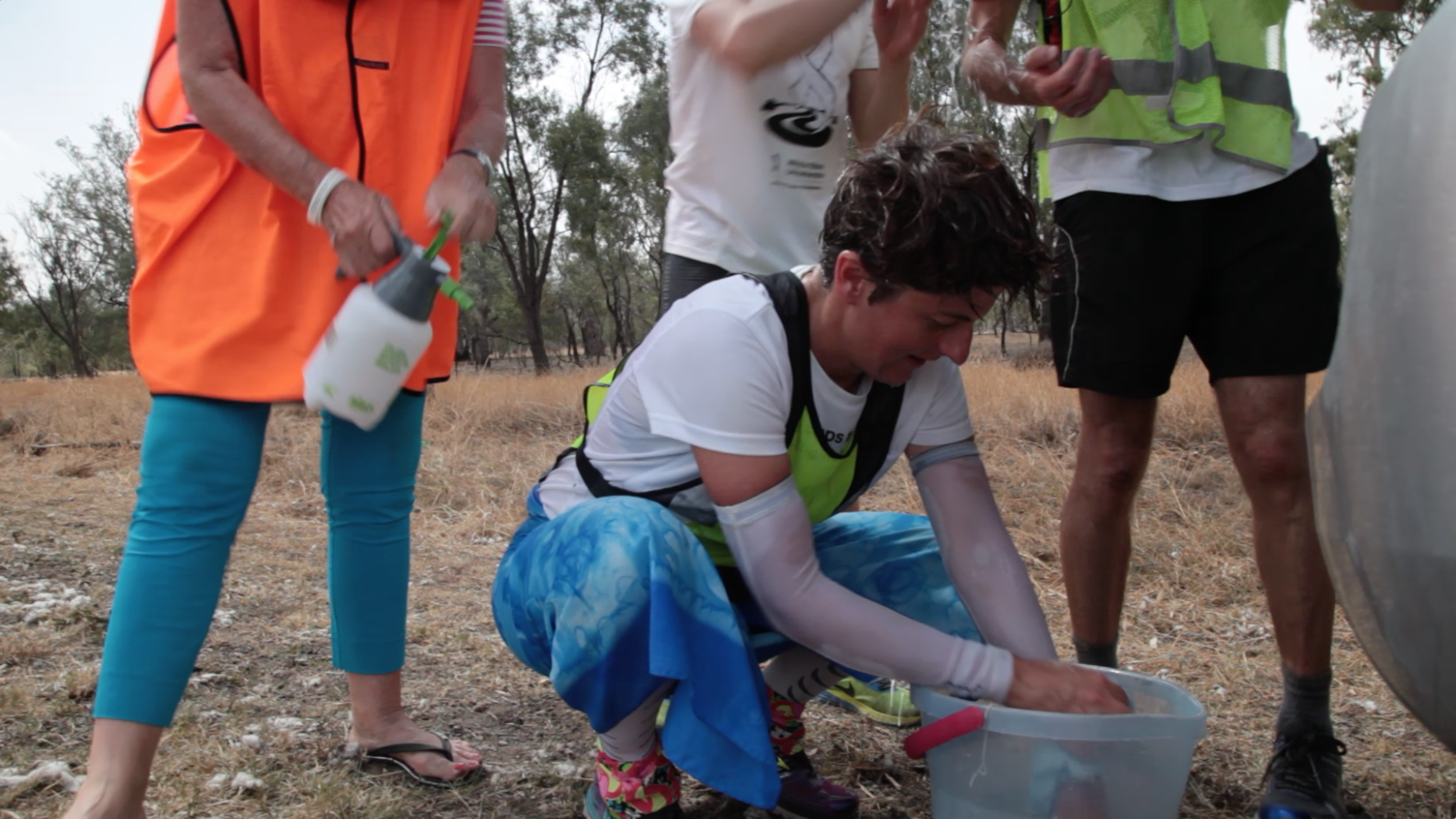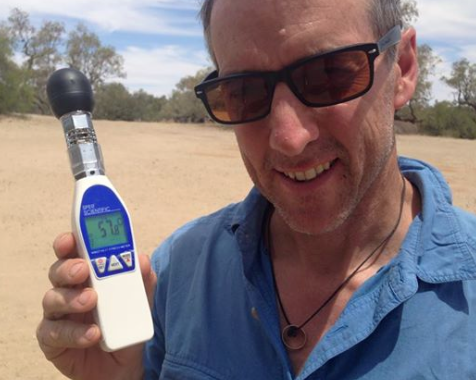When is Hot too Hot?
Originally published: Austrailia Runner Magazine / Kiwi Trail Runner February / March 2018
In November 2014, I ran a solo ultramarathon of 860km over 12 days through remote and regional areas of New South Wales. The average daily temperature through these areas in November soars to the mid-thirties and above.
During my run we had the hottest November in 57 years with radiating heat from the road reaching above 50 degrees most days. It was a scorcher and set a benchmark for the management of heat stress during multi-day ultramarathons. As a comparison, these temperatures are as bad as it gets in Death Valley during the Badwater Ultramarathon, but rather than surviving it for one day we had to endure it for over a week.
Only after I had finished the run did I find out that people had expected me to stop running due to the heat. They thought I would pull the plug.
Indeed the extreme conditions were potentially life threatening but a substantial amount of preparation and planning had gone into keeping me safe out there. There was no ‘luck’ or super-human ability in my survival. Each step was supported with tactical decision-making about heat stress monitoring and response.
As you head out the door to do summer running you need to be going through the same planning process because the consequences of making the wrong judgement call can kill you.
The cost of getting it wrong
If you put your body under too much heat stress it will result in brain damage, organ failure, and death. There is no equivocation. There is no lucky escape. It will happen. Your body will shut down in its final throes of survival and then given in. Heat stress is not something to be taunted, it will win.
Most people don’t realise how quickly heat stroke can set in. Within moments you can go from a state of feeling ok to being hauled away in an ambulance – if you’re lucky.
I had an experience of that on the second day of my ultramarathon. We were carefully monitoring my vital signs including heart rate, hydration and mental acuity. I was walking / slow running two kilometres at a time.
I would do a leg, cool down in a bucket of water and then go again. In the afternoon of the second day the temperature dropped a few degrees and I was feeling strong so we extended the leg to three kilometres. I reached 2.5km, only 500 metres further than the previous leg, and my heart rate suddenly accelerated.
I immediately stopped, found a patch of shade and used my radio to call the support vehicle back to me. They were there within moments, I cooled down and all was fine.
Had I tempted fate, after all it was ‘only 500 metres’ to the vehicle, I have no doubt the outcome would have been very different. Imagine if that same scenario unfolded when you’re out on a trail in a remote area where there was no chance of rapid medical response?
Making the judgement call
Our strategy for surviving the heat during my ultramarathon was developed with the support of Lucas Trihey of Event Safety Australia.
During my ultramarathon we were using two sets of data to monitor the level of heat stress I was experiencing. The Wet Bulb Global Temperature (WBGT) was our benchmark for determining the level of environmental stress and observation of my hydration, heart rate and mental acuity was used to assess my performance within that environment.
The WBGT is a measure of the heat stress in direct sunlight. It considers temperature, humidity, wind speed, sun angle and levels of solar radiation. A purpose-built device is used to monitor conditions and deliver an index number. Originally developed for the US Marine Corps, it is widely used by military agencies to assist with managing workloads in heat.
The American College of Sports Medicine provides a guide for race directors to manage the risk of heat at events.
WBGT >28° C Black Flag: Cancel or recommend voluntary withdrawal.
WBGT 23° C - 28° C Red Flag: Recommend participants at increased risk for heat collapse withdraw from race and others slow pace to match conditions.
WBGT 18° C - 22° C Yellow Flag: Recommend participants at increased risk for heat collapse slow pace. Warn entrants of increased risk of heat collapse.
WBGT <18° C Green Flag: Collapse can still occur. Decreased risk of hyperthermic and hypothermic collapse.
WBGT <10° C White Flag: Increased risk of hypothermic collapse.
(Source: Road Race Management, Inc.)
During my ultramarathon, conditions consistently achieved a WBGT of 28 degrees and above. Having objective data played an important role in being able to make the best judgement call for how we managed the conditions, particularly when we were tired. Our brains wanted to push harder to get the day’s work done but our data said we needed to stay slow.
While monitoring the WBGT may not be practical on your next trail run, make sure you take its considerations into account when determining if you will head out the door. While you may be OK with a high ambient temperature, add in factors of humidity and solar radiation and your smartest option may be to sit it out.
Combined with the WBGT data was observation of my vital signs. Symptoms of heat stress include;
Accelerated heart rate
Inability to concentrate
Breathing difficulty
Heat rash
Muscle cramp
Thirst
Fainting / light-headedness
Nausea
Headache
In preparation for the run I spent considerable time observing my heart rate, hydration and mental acuity under normal, healthy conditions. I knew how my body should feel. During the ultramarathon any variation from that was treated as a red-flag and corrective action was taken without hesitation. In such an extreme environment there is no room for error, no room for ‘wait and see’. The response needs to be immediate. This is a practical lesson all summer runners need to learn when making a judgement call about continuing in hot conditions.
Genetics and acclimatisation
Ultimately how well your body responses to heat will be heavily influenced by your genetics and acclimatisation. Some people are far more effective at releasing heat from their bodies than others.
You and a mate could do the same training, be equally as fit and well-prepared but when it comes to the crunch you will have different responses to heat. It is vital that you don’t judge your own wellness on the experience of others. It is a very bad idea to look at your mate and think ‘gee they’re not hurting, maybe I just need to toughen up’. Listen to your body. Every body is different.
Acclimatisation is the process of adapting to heat stress. I spent the month prior to my ultramarathon putting myself into heat-stressed conditions. I exercised in a sauna, painted my house wearing multiple thermal tops, and ran with a raincoat on. These activities enabled my mind and body to gradually adapt to and understand hot conditions. The principle of Prior Preparation Prevents Poor Performance has a major role to play in surviving a hot summer run.
What I did to survive extreme heat:
Heat training in preparation
Drink to thirst – no more, no less
Protect your drink bottle during the heat of the day, the water can get too hot to drink
Focus on getting heat out of your body. A $5 sarong dipped in water and wrapped around my legs worked wonders.
Sun protection is everything – do not allow the sun to touch your body
I was constantly dipping my head in a bucket of water to help with heat dissipation
My goal each day was to 'arrive awesome' focusing on arriving in the best possible condition
Take care of any issues while they are still minor.
I kept my heart rate very low. I trained to do this. My target was to keep below 125 bpm.
At night you need to get the heat out of your body. Cold shower or swim if possible. Wet towel with ice and fan blowing worked a treat as well.




